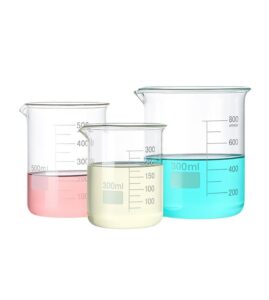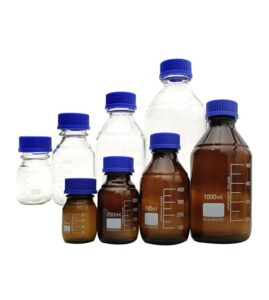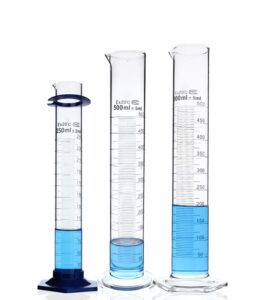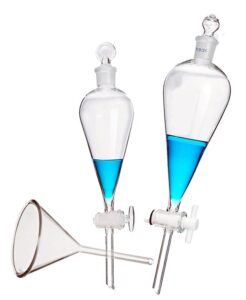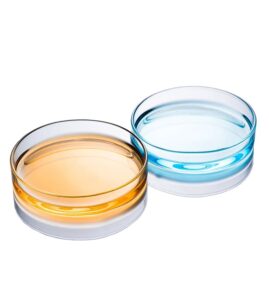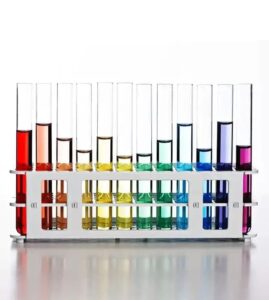When we think of scientific laboratories, a specific image often comes to mind: white coats, sterile gloves, and of course, glassware brimming with mysterious liquids. Among the most iconic of this glassware is the Erlenmeyer Flask, a stalwart piece in any lab setup. But is that where its story ends?
In truth, an Erlenmeyer Flask is an all-rounder. It holds its own in the intense world of scientific research and simultaneously carries its weight in surprisingly common everyday uses. Its ubiquitous nature often makes us overlook the impressive versatility it offers.
As we journey together into the curious life of an Erlenmeyer Flask, we hope you’ll find a newfound appreciation for this unassuming piece of glassware.
The Erlenmeyer Flask in Scientific Laboratories
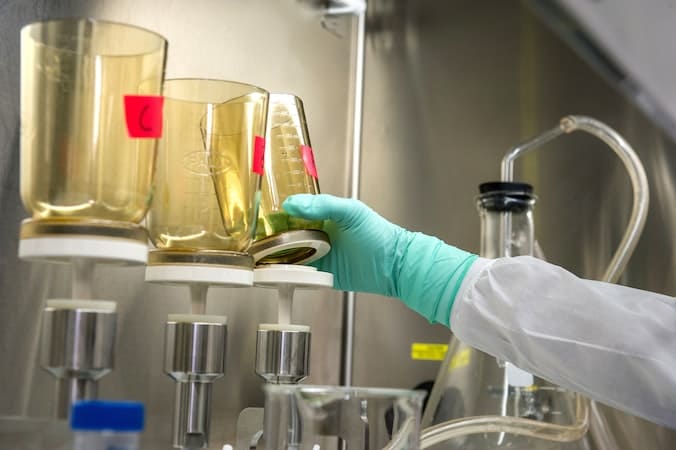
Erlenmeyer Flasks in Chemistry: A Dynamic Tool
In the realm of chemistry, the Erlenmeyer flask is truly an indispensable tool. Here, it is used for mixing by swirling, without risk of spillage, due to its conical shape. They’re also used for heating substances, performing reactions, titration, and as a container for storing solutions.
Erlenmeyer Flasks in the Physics Laboratory: Heat and Beyond
In the world of physics, the Erlenmeyer flask finds applications in experiments related to heat, thermodynamics, and fluid dynamics. The heat-resistant nature of these flasks makes them well-suited for these roles.
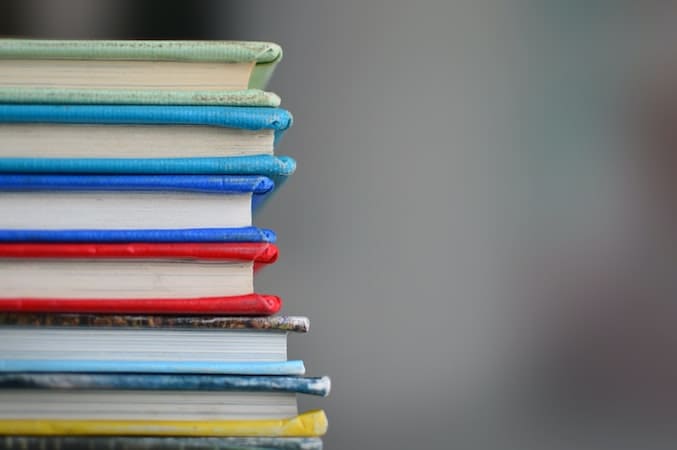
Erlenmeyer Flasks in Education: A Tool for Learning
A cornerstone of hands-on scientific education, Erlenmeyer flasks are used in demonstrations and experiments at all levels, from primary school science labs to university research laboratories. Their design and versatility make them an excellent educational tool.
Making Medicines: Erlenmeyer Flasks in Pharmaceutical Research
The pharmaceutical industry leans heavily on the Erlenmeyer Flask. In drug development, these flasks are used for the culturing of microorganisms and cells, a crucial step in testing new drug compounds. They provide an ideal environment for bacteria and yeast to grow, enabling scientists to observe their reactions to potential drug compounds and make assessments about efficacy and safety.
The flask’s design aids in maintaining sterility, a critical aspect of pharmaceutical research. By partially covering the flask with aluminum foil or cotton wool, scientists can provide a sterile, controlled environment for their experiments, preventing contamination and ensuring reliable results.
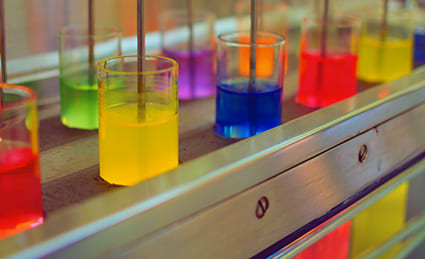
Color Chemistry: Erlenmeyer Flasks in Dye Synthesis
The field of textile and fashion employs Erlenmeyer Flasks for the synthesis and testing of dyes. The unique shape of the flask allows for the swirling of materials, ensuring a uniform distribution of heat and facilitating a consistent reaction throughout the mixture.
The textile industry relies heavily on this process to test new color compounds, ensuring that they are safe, durable, and colorfast before using them on a large scale in garment production. In this way, the Erlenmeyer Flask contributes to the vibrant array of colors we see in our clothing and textiles every day.
Nurturing Life: Erlenmeyer Flasks in Plant Tissue Culture
Erlenmeyer Flasks take on a nurturing role in plant tissue culture laboratories, housing plant tissues and seedlings in a controlled sterile environment. They are used to cultivate, grow, and study plants in vitro, thus contributing to biodiversity conservation, plant research, and horticulture.
The Unseen Defender: Erlenmeyer Flasks in Environmental Analysis
Scientists use Erlenmeyer Flasks to analyze environmental samples like water, soil, and air for potential contaminants, playing a crucial role in environmental protection and monitoring.
Discovering Microcosms: Erlenmeyer Flasks in Microbiology
Within the realm of microbiology, Erlenmeyer Flasks prove instrumental in growing cultures of microscopic organisms. These may include bacteria, yeast, algae, or fungi, all of which play vital roles in ecology, medicine, and even food production.
The broad base and narrow neck of the Erlenmeyer Flask make it an ideal vessel for growth media, allowing ample aeration for the organisms without a high risk of contamination. These flasks become mini ecosystems, where microorganisms multiply and thrive, yielding valuable insights into their life cycles, behaviors, and potential uses in biotechnology.
The Erlenmeyer Flask in Our Daily Lives
Brewing Bubbles: Erlenmeyer Flasks in Homebrewing
The Erlenmeyer Flask is an essential tool for homebrewing enthusiasts. When making beer at home, brewers use the flask for creating yeast starters to ensure a successful fermentation process. The flask’s shape allows for optimal aeration, promoting healthy yeast propagation.
Moreover, its ability to withstand temperature changes makes it suitable for use in a process called ‘wort chilling’, a critical step in homebrewing. In short, this scientific flask plays a vital role in brewing the perfect pint of beer at home.

Crafting Scents: Erlenmeyer Flasks in Perfumery
Perfume making, an art that marries science and creativity, also sees the Erlenmeyer Flask put to good use. The perfumer, or ‘nose’, uses this flask to combine and experiment with different fragrances. The flask’s conical shape helps contain the volatile fragrance compounds, enabling a more accurate evaluation of the scent.
When creating a new fragrance, multiple versions of a scent will be created and stored in separate flasks, then evaluated over time to see how the scent evolves.
Sourdough Starters and the Erlenmeyer Flask
If you’re a fan of homemade sourdough bread, you might be surprised to learn that the Erlenmeyer Flask has a role in your kitchen. Sourdough starters, a mixture of flour and water that captures wild yeast, can be cultured in these flasks.
Their shape allows for the necessary expansion as the yeast ferments, and the narrow neck reduces the chance of unwanted microbes contaminating your starter. Thus, Erlenmeyer Flasks facilitate the making of that delicious, tangy bread you love.

Unassuming Companion of Aquarists: Erlenmeyer Flasks in Aquariums
Erlenmeyer Flasks find another surprising application in maintaining home aquariums. Aquarists use these flasks to prepare and measure solutions that adjust water parameters, such as pH and salinity.
Moreover, they are used to hatch brine shrimp, a popular food for aquarium fish. The shape of the flask allows for easy harvesting of the shrimp while ensuring optimal oxygen supply during the hatching process.
Envisioning The Erlenmeyer Flask in Future Applications
As we continue to evolve and adapt, pushing boundaries of innovation, one can’t help but wonder, “What could be the next destination for the Erlenmeyer Flask?
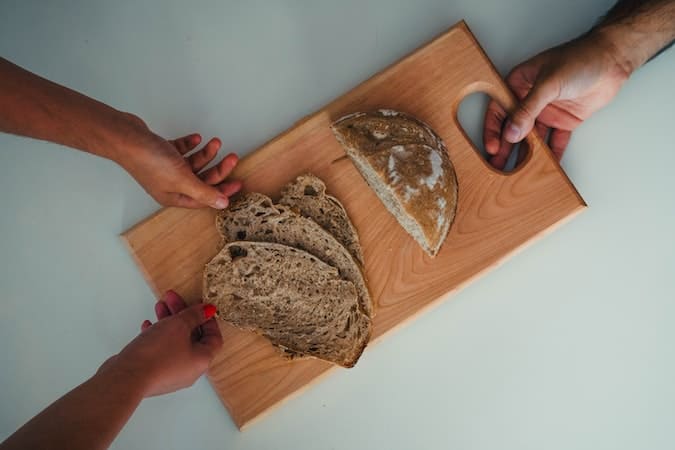
Future Food Factories: Erlenmeyer Flasks and Cellular Agriculture
Imagine a future where your meat is grown in a lab, not farmed. It sounds like science fiction, but it’s a reality we’re moving towards, and the Erlenmeyer Flask could play a part.
In cellular agriculture, animal cells are cultured to produce meat without the need for farming animals. Erlenmeyer Flasks, with their aptitude for supporting cell cultures, could well be the vessels in which your future steak is grown.
The Path to Custom Cure: Erlenmeyer Flasks in Personalized Medicine
The field of personalized medicine is rising, aiming to tailor medical treatment to individual characteristics of each patient. Erlenmeyer Flasks may find use in culturing patients’ cells to test different treatments, effectively creating a ‘trial run’ for medicine, minimizing risks and maximizing the chances of successful treatment.
Conclusion
The journey of an Erlenmeyer Flask is a testament to the pervasive influence of science in our lives. This unassuming conical piece of glassware is not just a silent witness to groundbreaking discoveries but also a critical participant in everyday life. Its applications span across the realm of labs, homes, industries, and even predict a fascinating future.
So, the next time you come across an Erlenmeyer Flask, remember it’s not just a symbol of science; it’s a symbol of versatility and adaptability. It’s a testament to how science is not just about complex theories and lab coats; it’s interwoven into our daily lives, often in ways we don’t realize.
Erlenmeyer Flask: the unsung hero of the scientific world and an everyday champion. Our world, as we know it, wouldn’t quite be the same without it.


